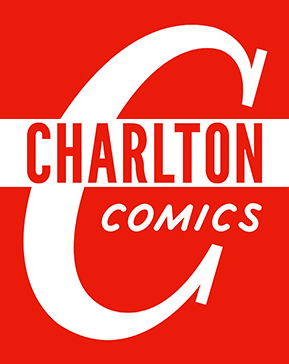
Charlton Comics was an American comic-book publishing company that existed from 1945 to 1986, having begun under a different name: T. W. O. Charles Company, in 1940. It was based in Derby, Connecticut. The comic-book line was a division of Charlton Publications, which published magazines, puzzle books, and briefly, books. It had its own distribution company.
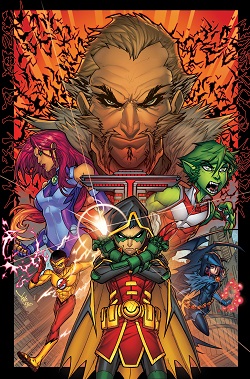
The Teen Titans are a superhero team appearing in American comic books published by DC Comics, frequently in eponymous monthly series. As the group's name indicates, the members are teenage superheroes, many of whom have acted as sidekicks to DC's premier superheroes in the Justice League. The original team later becomes known as the Titans when the members age out of their teenage years, while the Teen Titans name is continued by subsequent generations of young heroes. First appearing in 1964 in The Brave and the Bold #54, the team was formed by Kid Flash, Robin, and Aqualad (Garth) before adopting the name Teen Titans in issue 60 with the addition of Wonder Girl to their ranks.

Super Friends is an American animated television series about a team of superheroes which ran from 1973 to 1985 on ABC as part of its Saturday-morning cartoon lineup. It was produced by Hanna-Barbera and was based on the Justice League of America and associated comic book characters published by DC Comics.

George Pérez was an American comic book artist and writer, who worked primarily as a penciller. He came to prominence in the 1970s penciling Fantastic Four and The Avengers for Marvel Comics. In the 1980s he penciled The New Teen Titans, which became one of DC Comics' top-selling series. He penciled DC's landmark limited series Crisis on Infinite Earths, followed by relaunching Wonder Woman as both writer and penciller for the rebooted series. In the meantime, he worked on other comics published by Marvel, DC, and other companies into the 2010s. He was known for his detailed and realistic rendering, and his facility with complex crowd scenes.

Marvin Arthur Wolfman is an American comic book and novelization writer. He worked on Marvel Comics's The Tomb of Dracula, for which he and artist Gene Colan created the vampire-slayer Blade, and DC Comics's The New Teen Titans and the Crisis on Infinite Earths limited series with George Pérez.
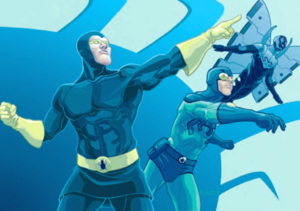
Blue Beetle is the name of three superheroes appearing in a number of American comic books published by a variety of companies since 1939. The most recent of the companies to own rights to Blue Beetle is DC Comics, which bought the rights to the character in 1983, using the name for three distinct characters over the years.

Teen Titans is an American animated superhero television series created by Glen Murakami and developed by Murakami, David Slack and Sam Register. Based on DC Comics's superhero team Teen Titans, it was produced by Warner Bros. Animation, and DC Comics. The show premiered on Cartoon Network on July 19, 2003; its first two seasons also aired on Kids' WB. Initially, only four seasons were planned, but the popularity of the series led to Cartoon Network's ordering a fifth season. The final half-hour episode of the show, "Things Change", aired on January 16, 2006; it was later followed by a TV movie, Teen Titans: Trouble in Tokyo, that premiered on September 15 the same year, serving as the series finale. A 15-minute episode titled "The Lost Episode" was released as part of an online promotional campaign by Post Consumer Brands in January 2005.
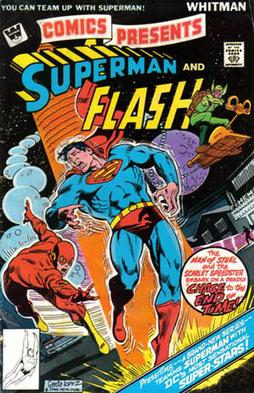
DC Comics Presents is a comic book series published by DC Comics from 1978 to 1986 which ran for 97 issues and four Annuals. It featured team-ups between Superman and a wide variety of other characters in the DC Universe. A recurring back-up feature "Whatever Happened to...?" had stories revealing the status of various minor and little-used characters.
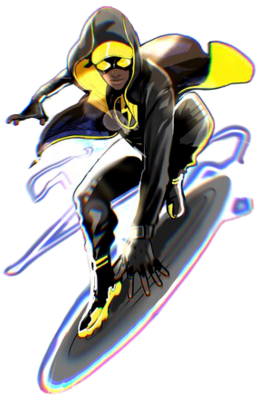
Static is a superhero appearing in American comic books published by DC Comics. The character was created by Milestone Comics founders Dwayne McDuffie, Denys Cowan, Michael Davis, Derek T. Dingle, and Christopher Priest. The character first appeared in a 3-page preview in Icon #1 with his first full appearance in Static #1, written by McDuffie and Robert L. Washington III and illustrated by John Paul Leon. He is a member of a fictional subspecies of humans with superhuman abilities known as metahumans. Not born with his powers, Hawkins' abilities develop after an incident exposes him to a radioactive chemical called "Quantum Juice", turning him into a "Bang Baby".
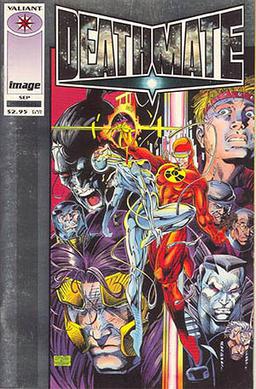
Deathmate is a six-part comic book crossover between Valiant Comics and Image Comics published in 1993–94. The series is remembered for its negative impact on comic book retailers and the industry as a whole due to its late, over-ordered but poorly-selling books.

Walter Flanagan is a former comic book store manager, reality television personality, podcaster, and comic book artist. Flanagan is a long-time friend of Kevin Smith, and it was Flanagan who turned Smith on to comic books. He formerly managed Jay and Silent Bob's Secret Stash in Red Bank, New Jersey.

Teen Titans Go! is a comic book series that was published by DC Comics. It is based on the animated television series Teen Titans, which is itself loosely based on the team that starred in the popular 1980s comic The New Teen Titans. The series was written by J. Torres with Todd Nauck and Larry Stucker as the regular illustrators. The series focuses on Robin, Raven, Starfire, Beast Boy, and Cyborg who are the main cast members of the TV series. Also, the show is circled around other characters from other DC comics.

Robert Gilbert Haney, Jr. was an American comic book writer, best known for his work for DC Comics. He co-created the Teen Titans as well as characters such as Lance Bruner, Metamorpho, Eclipso, Cain, and the Super-Sons.
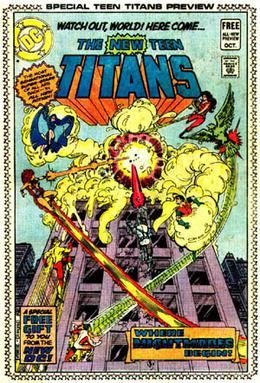
DC Comics insert previews were 16-page comic book stories inserted into issues of existing DC Comics series to promote new series usually debuting the next month. Running from 1980 to 1985, they consisted of a front cover, 14 pages of story, and a back cover that depicted the cover of the actual first issue. The addition of the insert did not entail an increase in the price of the comic book, and the cover copy called the insert "a special free 16-page comic!"

DC Rebirth is a 2016 relaunch by the American comic book publisher DC Comics of its entire line of ongoing monthly superhero comic book titles. Using the end of The New 52 (2011–2016) initiative in May 2016 as its launching point, DC Rebirth restored the DC Universe to a form much like that prior to the 2011 "Flashpoint" storyline while still incorporating numerous elements of The New 52, including its continuity. It also saw many of its titles move to a twice-monthly release schedule, along with being released at US$2.99.

Blue Juice Comics is an American publisher of comic books, picture books, and prose. The company was founded as the publishing division of Blue Juice Films, Inc in 2012. Most of its publications were initially conceived as film or animation ideas.

Anne Bonnie is an American comic book created, written, and illustrated by Tim Yates. The first issue was published by Blue Juice Comics on March 19, 2014. Additional issues have been published on an irregular schedule. In December 2015, the first six issues were collected into a trade paperback.

Invincible is an American comic book series written by Robert Kirkman, illustrated by Cory Walker and Ryan Ottley, and published by Image Comics. Set in the Image Universe, Invincible follows the coming of age of superhero Mark Grayson / Invincible, a Viltrumite and first-born son of Omni-Man, the most powerful superhero on Earth. The series began publication on January 22, 2003, concluding on February 14, 2018, with 144 issues, across the storylines Family Matters, Eight Is Enough, Perfect Strangers, Head of the Class, The Facts of Life, A Different World, Three's Company, My Favorite Martian, Out of This World, Who's the Boss?, Happy Days, Still Standing, Growing Pains, The Viltrumite War, Get Smart, Family Ties, What's Happening?, The Death of Everyone, The War at Home, Friends, Modern Family, Reboot?, Full House, and The End of All Things. Several spin-off series were released over its run, including: Brit, The Pact, Atom Eve & Rex Splode, and Guarding the Globe. An animated television adaptation began streaming on Amazon Prime Video on March 25, 2021.

















